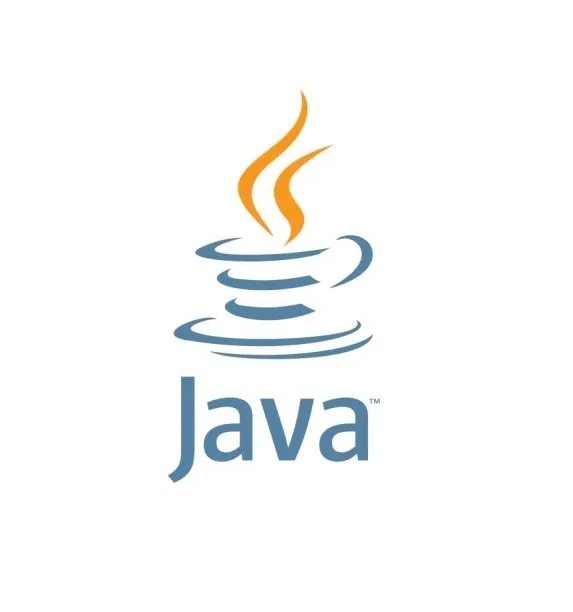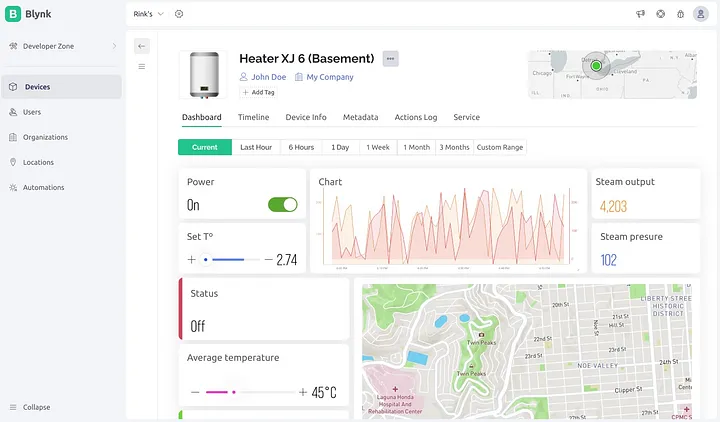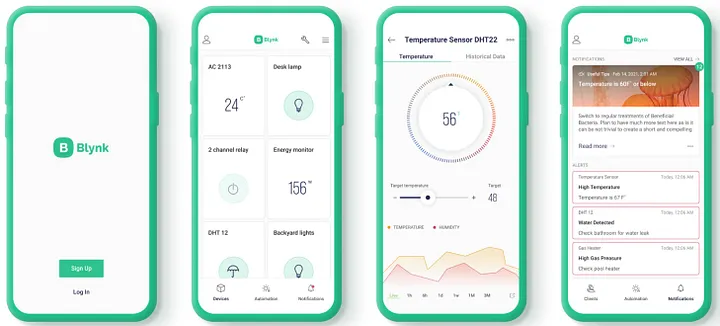Java, Unlocking IoT Potential with Blynk (Internet of things)
Overview In previous article we reviewed Java tools to make IoT applications. Also we reviewed Pi4J for IoT. In this article we will review Blynk for IoT.
Blynk is a popular platform that simplifies the development of IoT (Internet of Things) projects by providing a comprehensive set of tools and services for connecting hardware devices to the cloud and mobile applications. In the context of Java for IoT, Blynk offers a Java SDK (Software Development Kit) that enables developers to integrate Blynk functionality into their Java-based IoT applications.
Here’s an overview of Blynk platform and its components:
- Blynk App: The Blynk mobile app (available for iOS and Android) serves as the interface for controlling and monitoring IoT devices. It allows users to create custom dashboards with widgets (buttons, sliders, graphs, gauges, etc.) to interact with connected devices, visualize sensor data, and receive notifications.
- Blynk Cloud: Blynk Cloud acts as the backend infrastructure for managing device connections, data storage, and communication between devices and the Blynk app. It provides secure communication channels using protocols like MQTT (Message Queuing Telemetry Transport) and WebSocket.
- Blynk Libraries: Blynk provides client libraries for various hardware platforms and programming languages, including Arduino, Raspberry Pi, ESP8266/ESP32, and Java. These libraries abstract the complexity of communication protocols and provide high-level APIs for interacting with the Blynk platform.
- Blynk Server: For advanced users and organizations, Blynk offers a self-hosted Blynk Server solution. This allows users to deploy their own instance of the Blynk server on-premises or in the cloud, providing greater control over data privacy, scalability, and customization.
- Blynk API: Blynk exposes RESTful APIs that allow developers to programmatically interact with the Blynk platform. This enables integration with third-party services, automation workflows, and custom applications.
In the context of Java for IoT, the Blynk Java SDK enables developers to build IoT applications using Java programming language and seamlessly integrate them with the Blynk platform. With the Blynk Java SDK, developers can connect Java-based IoT devices to the Blynk Cloud, create custom dashboards in the Blynk app, and implement features such as data logging, remote control, and push notifications.
Overall, Blynk platform in Java for IoT provides a user-friendly and versatile solution for building IoT projects, empowering developers to create connected devices and applications with ease.
Data logging Data logging is the process of recording and storing data over time for various purposes, such as analysis, monitoring, troubleshooting, and compliance. It involves capturing data from sensors, devices, or systems and saving it to a storage medium, such as a file, database, or cloud service. Data logging tasks offer several benefits:
- Historical Analysis: Data logging allows organizations to analyze historical data to identify trends, patterns, and anomalies over time. By examining past data, organizations can gain insights into performance metrics, system behavior, and environmental conditions, enabling them to make informed decisions and strategic planning.
- Performance Monitoring: Data logging facilitates continuous monitoring of system performance, resource utilization, and operational metrics. By logging key performance indicators (KPIs) in real-time, organizations can assess system health, detect performance bottlenecks, and optimize resource allocation to improve efficiency and reliability.
- Troubleshooting and Diagnostics: Data logging is essential for diagnosing problems, troubleshooting issues, and performing root cause analysis. By reviewing historical data logs, organizations can pinpoint the source of errors, failures, or performance degradation, enabling them to take corrective actions and resolve issues promptly.
- Regulatory Compliance: In many industries, compliance with regulatory requirements necessitates the collection and retention of data logs. Data logging ensures adherence to industry standards, regulations, and best practices by maintaining a comprehensive record of relevant activities, events, and parameters. This is particularly crucial in sectors such as healthcare, finance, and manufacturing, where regulatory compliance is mandatory.
- Predictive Maintenance: Data logging enables organizations to implement predictive maintenance strategies by analyzing equipment performance data and identifying potential issues before they escalate into costly failures or downtime. By monitoring equipment health indicators and maintenance metrics, organizations can schedule proactive maintenance interventions, optimize asset lifecycle management, and reduce unplanned downtime.
- Quality Control and Assurance: Data logging plays a critical role in quality control and assurance processes by monitoring production processes, product parameters, and environmental conditions. By logging data at various stages of manufacturing, assembly, or testing, organizations can ensure product quality, consistency, and compliance with specifications, thereby enhancing customer satisfaction and brand reputation.
Overall, data logging tasks provide organizations with valuable insights, actionable intelligence, and regulatory compliance assurance, enabling them to optimize operations, mitigate risks, and drive continuous improvement across various domains and industries.
Example demonstrating data logging with Blynk in Java:
1
2
3
4
5
6
7
8
9
10
11
12
13
14
15
16
17
18
19
20
21
22
23
24
25
26
27
28
29
30
31
32
33
34
35
36
37
38
39
40
41
42
43
44
45
46
47
48
49
50
51
52
53
54
55
56
57
58
59
60
61
62
import cc.blynk.client.data.Value;
import cc.blynk.client.BlynkClient;
import cc.blynk.client.BlynkExecutor;
import cc.blynk.client.BlynkConnectionStateListener;
import java.util.concurrent.Executors;
import java.util.concurrent.ScheduledExecutorService;
import java.util.concurrent.TimeUnit;
public class BlynkDataLoggingExample {
// Blynk authentication token
private static final String AUTH_TOKEN = "YourAuthToken";
// Virtual pin for logging data
private static final int VIRTUAL_PIN = 1;
public static void main(String[] args) {
// Create a Blynk client
BlynkClient blynkClient = new BlynkClient(AUTH_TOKEN);
// Add a connection state listener
blynkClient.onConnect(new BlynkConnectionStateListener() {
@Override
public void connect() {
System.out.println("Connected to Blynk server");
}
@Override
public void disconnect() {
System.out.println("Disconnected from Blynk server");
}
});
// Connect to the Blynk server
blynkClient.connect();
// Create a scheduled executor service
ScheduledExecutorService executorService = Executors.newSingleThreadScheduledExecutor();
// Schedule a task to send data to Blynk every 5 seconds
executorService.scheduleAtFixedRate(() -> {
// Generate random data (for demonstration purposes)
double randomData = Math.random() * 100;
// Log data to Blynk
blynkClient.virtualWrite(VIRTUAL_PIN, randomData);
System.out.println("Data logged to Blynk: " + randomData);
}, 0, 5, TimeUnit.SECONDS);
// Shutdown executor service gracefully when program exits
Runtime.getRuntime().addShutdownHook(new Thread(() -> {
executorService.shutdown();
try {
executorService.awaitTermination(5, TimeUnit.SECONDS);
} catch (InterruptedException e) {
e.printStackTrace();
}
}));
}
}
In this example:
- We import the necessary Blynk client classes for Java.
- We define the Blynk authentication token and the virtual pin to log data to.
- We create a Blynk client instance and add a connection state listener to handle connection events.
- We connect to the Blynk server using the authentication token.
- We create a scheduled executor service to periodically send data to Blynk.
- We schedule a task to generate random data and log it to Blynk every 5 seconds.
- We gracefully shutdown the executor service when the program exits.
Make sure to replace “YourAuthToken” with your actual Blynk authentication token. Additionally, ensure you have the Blynk Java client library added to your project dependencies.
Unlocking IoT Potential
In summary, Blynk offers a comprehensive platform for simplifying IoT development, providing developers with the tools and services needed to connect hardware devices to the cloud and mobile applications seamlessly. Using Blynk in Java, developers can achieve the following:
- Remote Control: Control and monitor IoT devices remotely from anywhere using the Blynk mobile app. With Java and Blynk, developers can create custom dashboards with interactive widgets to interact with connected devices, such as buttons, sliders, and graphs.
- Data Visualization: Visualize sensor data, system metrics, and environmental conditions in real-time using widgets in the Blynk app. With Java, developers can send sensor readings, telemetry data, and other information to the Blynk cloud for visualization and analysis.
- Data Logging: Log and store data from sensors, devices, and systems using Blynk. In Java, developers can implement data logging tasks to capture and record historical data for analysis, monitoring, troubleshooting, and compliance purposes.
- Push Notifications: Receive real-time notifications and alerts on your mobile device based on predefined conditions or events detected by IoT devices. With Java and Blynk, developers can implement push notification functionality to notify users of critical events, alarms, or system status changes.
- Automation and Control: Automate tasks, routines, and workflows based on triggers, schedules, or user-defined rules using Blynk. With Java, developers can implement automation logic to control devices, execute actions, and respond to events automatically, enhancing efficiency and convenience.
- Integration with Third-Party Services: Integrate IoT devices with third-party services, platforms, and APIs using Blynk. With Java, developers can leverage Blynk’s RESTful APIs and webhooks to integrate with external systems, cloud services, and data analytics tools, enabling seamless interoperability and data exchange.
Overall, Blynk empowers developers to build innovative IoT applications and solutions with Java, enabling remote monitoring, control, visualization, and automation of connected devices and systems. Whether you’re a hobbyist, enthusiast, or professional developer, Blynk in Java offers a versatile and user-friendly platform for bringing your IoT ideas on Java.


